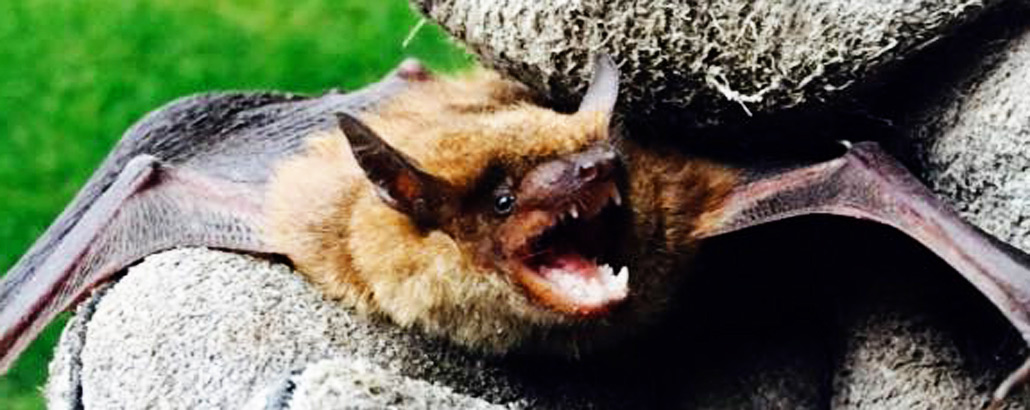- USA Wildlife Removal Education Guide - Bat-Exclusion Equipment
Bat-Exclusion Equipment

But once a colony has established itself that is not going to happen unless you take measures to exclude the creatures. That’s not complicated, but it does require attention to detail. Bats are tiny creatures weighing as little as an ounce or two and able to enter and exit through extremely small openings. These may be in siding, eaves, soffits, other places where holes have developed (or been created) or where building elements come together leaving tiny openings—e.g. at walls and roof lines.
The first step in your exclusion then, is to identify how they come and go. You can do that by observing them for a few days at dusk. It’s usually in a fairly high place, so your first piece of equipment is going to be a sturdy ladder that allows you to examine potential entry/exit spots around the dwelling. It’s not as complicated as it seems, since bats tend to leave evidence in the form of their droppings, or guano.
Once you’ve identified their entry/egress points you have to close off the openings, which generally requires no more than basic carpentry tools, such as a hammer and metal shears, and a few supplies from the hardware store. Often, small openings can be closed with silicone caulking, which is best applied using a caulking gun, but which is also available in squeezable tubes.
For larger openings, it’s best to close off access using hardware cloth (1/2” recommended) or window screening (fiberglass, galvanized wire, plastic or copper mesh). Once you’re satisfied that the bats have all departed, and that there are no babies left inside, you simply trim and shape the screening material, for which you’ll need the metal shears, and tack it into place (the hammer).
If you leave the bottom open and extend the screen barrier loosely a few inches below the entry point, any bats remaining inside can still exit but none can regain entry. Alternatively, use metal bird netting formed into a one-way tube, flared at the building end and tacked to the wall around the opening to allow exit while precluding reentry.
Again, once you’re satisfied that the bats are gone, close off the hole to prevent reentry --you may need a saw. Once their out of the house, keep them around by building or buying them a bat house.
Read more educational guides that I wrote from my years of experience. Learn how to get a bat of a wall, and how to remove bat urine and urine stains. Find out if bats live in more Urban or Wild Places and the Symptoms of a Sick Bat. I can teach you how to get rid of bats in the attic. Read my thoughts on if you should Hire a Pro to Remove my Bats. Find out if you should try to Relocate a Bat and learn what Wildlife Rehabilitators do with bats. Learn, too, if all bats carry rabies.
If you need help, we service the entire USA! Click here for a wildlife removal specialist in your town!
Go back to the main Bat Removal page for more information about Bat-Exclusion Equipment.

